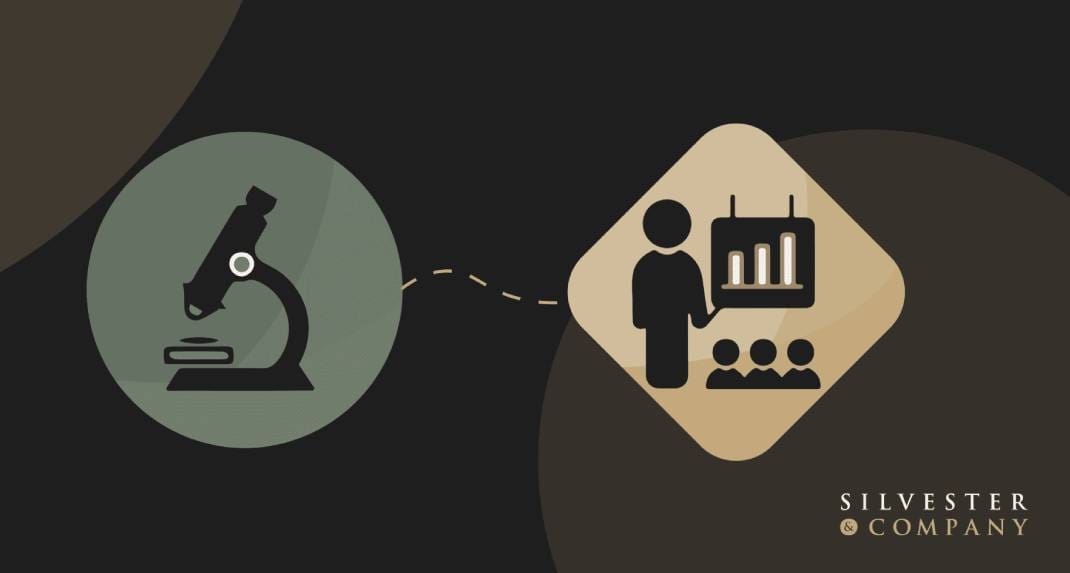
Avenues For Truth Finding
Mistakes are avenues for truth-finding. Failure and fault are virtually inseparable in households, organizations, and cultures. We all learned at some point that admitting mistakes means taking the blame, but that is driven by the assumption that blame needs to be placed because mistakes are ultimately bad. Few organizations have shifted to a culture in which the rewards of learning from mistakes are fully realized or utilized. Mistakes in the workplace are opportunities to heuristically discover more about clients, a work process, other employees, one’s self, and so much more. If you approach them in an inquisitive way, mistakes are wonderful avenues to find truth.

With a background in science and chemistry, my outlook on mistakes has always been that of curiosity and openness, choosing rather to see them as methods for learning and truth-finding, rather than things to be reprimanded for – externally from a superior or internally by one’s self. Not until I joined the workforce did I realize that I don’t see mistakes the same way my coworkers do. Science isn’t structured to shame mistakes like businesses, their leaders, and their employees sometimes are. When mistakes happen in the scientific world they are never seen as “bad things” they are avenues for discovery, true to the overarching objective of science.
My first rotation of graduate school perfectly encapsulates the outlook science has on mistakes. A few weeks into the semester under the tutelage of a very intellectual, seasoned, and somewhat hardened professor, I unknowingly introduced the wrong gas into a million dollar reaction chamber. Thankfully nothing catastrophic happened, there was no explosion, poisonous radiation or anything you might think would happen in a rogue science lab. Once I had realized what I had done (an hour after I had started the experiment) I immediately went to my advisor to let him know what happened. Firstly, he made sure my colleagues and I were safe. He then proceeded to ask “So, what happened? How did the results change when you used the wrong gas?” He reacted with curiosity rather than interrogation or reprimands for my behavior.

One may wonder why science is so successful despite such prevalent failures. The alternative is to suggest that it is successful because of them. It fails at a high rate and with regularity. Experiments go wrong, measurements do not deliver the anticipated results, reactants are contaminated, models are misleading, there are false positives, false negatives, the list goes on. These so-called mistakes however, have led to world-changing discoveries. Penicillin, the pacemaker, the microwave, plastic, anesthesia, and my personal favorite –
chocolate chip cookies – were all born from people making mistakes. Mistakes lead to wonderful discoveries, they should never result in punishment or lectures because they are actually advantageous. Mistakes are how research advances, whether clear-cut or ambiguous, they are fruitful in their own right. This mindset shouldn’t be an anomaly used only by scientists, it’s beneficial across disciplines including the traditional workforce.
So how should leaders react to the inevitable mistakes they and their employees make? I’m of the belief that as long as an employee’s mistake doesn’t interfere with the integrity of the business’s overarching goal, then it’s not a mistake. Once that mindset has been shifted, your job as a business leader is to use mistakes as a means to gather all the business intelligence you can and use it to your advantage. Executives commonly and understandably worry that taking a sympathetic stance toward failure will create an “anything goes” work environment. You should instead recognize that failure is inevitable in any organization and see that they are opportunities to learn more about the external variables you and your employees handle every day.

Picture this: A team member chain emails an entire group of people with the wrong title to a current search she’s working on. It was an understandable mistake, combining the titles of two similar searches she was simultaneously leading. Quickly realizing what she had done, she had corrected the email with a follow up, the appropriate job title and an apology. Now at this point she is bothered and has already chastised herself for what she had done, and how she could have avoided it. Since she’s implemented self-correcting behavior, further beratement from superiors, team members, or the recipients, are unnecessary. When it came to her superior finding out, it was a question of “So what happened? What can we learn from this?” By asking your employee “what did we learn” in an inquisitive, curious, and opportunistic way, you allow yourself the opportunity to learn about clients, customers, leadership, workplace habits and general business health. This is far more productive than asking “what did we learn” in a lecturing or blame-casting way which only leads to employee embarrassment and creates an environment where mistakes aren’t readily shared.
The business insights that we gathered from the chain email was surprising and would have never been realized if the mistake was only seen only as a means of behavior correction. These unexpected insights offered intelligence about our clients, candidates, and process. It reminded candidates that there was a human being on the other side of the emails, inmails and calls. It humanized a recruiter and actually resulted in more intrigue, interest, and responsiveness for the position. It disqualified a candidate for the way they were unable to deal with a simple mistake, and reminded us what qualities to look for in those we work with and advocate on behalf of. We also learned that our client was gracious with our mistake and gave us confidence in working with them in the future.
As leaders make this mental shift from reactionary to inquisitorial, they create and reinforce a culture that counteracts the blame game and makes people feel both comfortable with, and responsible for, surfacing and learning from failures. Leaders should insist that their organizations develop a clear understanding of “what happened”- and not “who did it”-when things go wrong. Focusing on getting it right,

not being right. Working to create an organizational culture in which employees feel safe admitting or reporting on their mistakes builds trust, promotes candor, autonomy, and truth-seeking. Mistakes aren’t bad, we just need to choose the lens we’d like to observe them from.